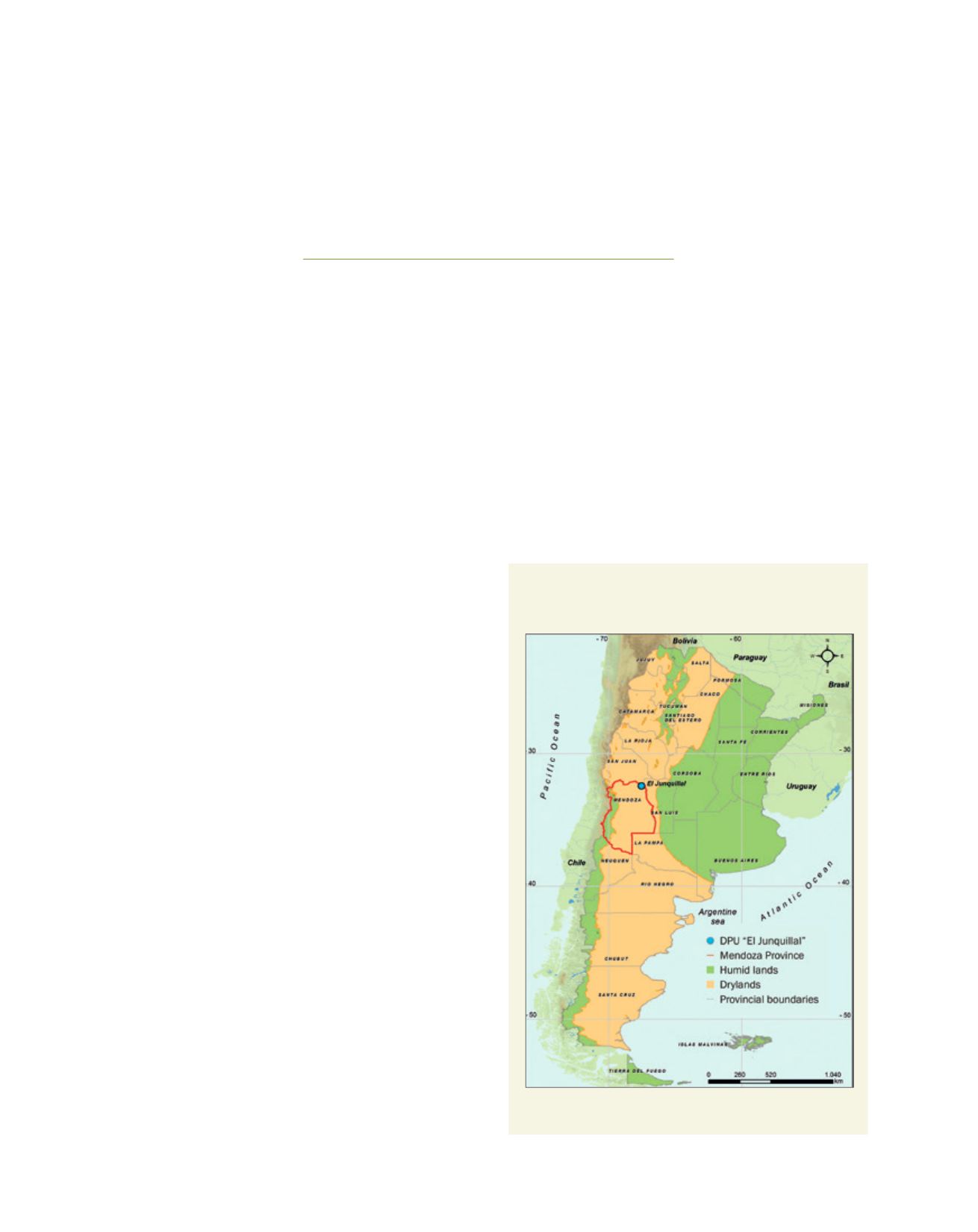

[
] 155
Recovering life in the desert: successful
experience with indigenous communities
in Mendoza, Argentina
Elena María Abraham, Laura Torres, Darío Soria, Clara Rubio and Cecilia Rubio, Argentine
Dryland Research Institute of the National Council for Scientific and Technical Research
The DPU experience involves active participation from
communities in the ‘El Junquillal’ locality of Argentina
Source: IADIZA
I
n contrast to the widespread image of Argentina as the
‘the world’s breadbasket’, reality shows a vast territory
(around 70 per cent) of dry, arid, semi-arid and dry
sub-humid lands affected by different degrees of desertifi-
cation. The Monte Phytogeographic Province makes up an
arid diagonal that crosses the country with all gradations
of aridity. This ecoregion, devoted to raising cattle and live-
stock, is the driest of cattle lands in Argentina. Agriculture
is confined to areas under intensive irrigation, the wine-
making ‘oases’. Both types of land use are responsible
for a great part of the degradation, evidenced not only by
biodiversity loss and deforestation of native woodland, but
fundamentally by the poverty of the people, most of them
subsistence goat herders who still remain in non-irrigated
drylands in extremely critical survival conditions.
1
Mendoza, with a surface area of 150,839 km
2
and a popu-
lation of 1,741,610 people, is located on the central strip
of Argentina’s drylands and 100 per cent of its territory
is desertified.
2
This territory is organized on the basis of
a great contradiction; the confrontation between irrigated
lands (oases) and the non-irrigated lands of the desert.
Competition for the use of water arises as one of the major
environmental conflicts in interaction between oasis and
desert: the latter no longer receives surface water inflows
because river flows are fully used for irrigating the culti-
vated area and for consumption in urban settlements. Hence,
non-irrigated drylands, which represent 96.5 per cent of the
territory, are characterized by very sparse population —
1.5 per cent of the total population — with a subsistence
economy based on goat production, and by their depend-
ence for equipment on distant urban centres. The desert has
lost its natural and social capital, which was used for build-
ing wealth in the oasis. Over time, it has offered valuable
resources such as mesquite woodland and grasslands, which
have been overexploited. The problems of land tenure, isola-
tion and marginalization of desert inhabitants have produced
strong exodus and migration movements. This involves
abandonment of productive lands and increased suburbani-
zation processes in the urban fringe.
The ultimate environmental problem affecting drylands is
desertification, triggered by climate variability and human
activities.
3
Despite the extent of Mendoza’s drylands, it
is essentially difficult to simplify the analysis of deserti-
fication because of the high diversity of socioeconomic,
political, ethnic and ecological situations taking place
throughout the area. Combating desertification is essential
to ensure long-term productivity of these drylands. Many
efforts have failed for using partial approaches, disregard-
L
iving
L
and
















